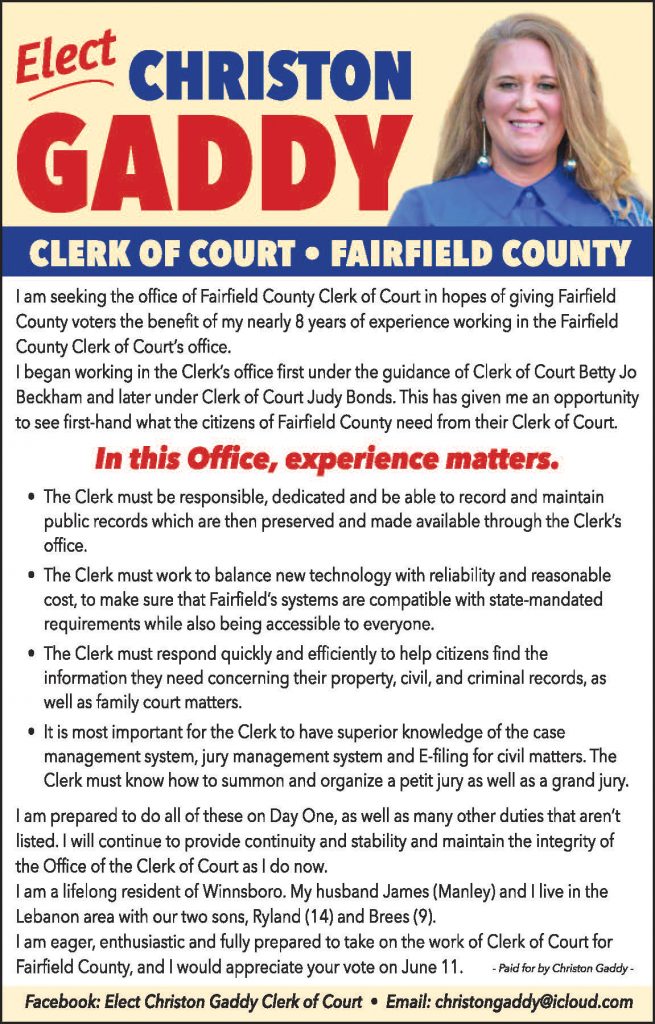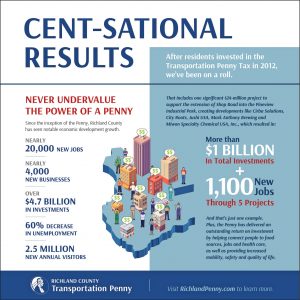FAIRFIELD – Council Chairman David Ferguson had promised that last Monday night’s Council meeting would dispel ‘the myth’ that the County had mishandled it’s Local Option Sales Tax (LOST) funds since it began collecting the tax in 2006. But, by and large, not much myth-busting occurred at that meeting. Instead, the public once again filled Council chambers to overflow and had many questions following a presentation by Ray Stevens, a partner with the Parker Poe Consulting firm and a former director of the S.C. Department of Revenue, and Michael E. Kozlarek, an attorney with Parker Poe who has been assisting Stevens in his examination of Fairfield County’s LOST practices.
At issue was the county’s handling of the Local Option Sales Tax, a referendum passed by Fairfield County voters in 2005 earmarking 100 percent of LOST revenues for property tax relief. According to SC Statute 4-10-10, et. seq., the sales tax revenue is to be returned to property owners each year in the form of a credit on their property tax bills. These tax credits are given based on the county’s estimate of how much LOST revenue it expects to receive each year. Since the tax credit is applied prior to the County receiving the LOST revenue, to prevent a shortfall, any revenue in excess of the estimate is held back to be credited the following year. That excess revenue should be the first money credited to the county property tax bills the following year. The excess is not allowed to accumulate in the general fund from year to year.
Stevens told the audience that he felt sure, “Based on all that I have seen, there’s no question that the LOST revenues are in fact being applied to property tax relief [in Fairfield County.] They’re not being used for something else.” Stevens was not able to answer questions from the audience as to how accurately and properly the county estimated it’s LOST revenue over the years and whether excess revenues carried over from previous years have been accumulating or credited entirely and in a timely manner to county residents’ tax bills. He said that information would not be available until the final LOST revenue checks for 2013 are received by the County in mid-August.
The question of how the County has managed the LOST funds first came to public light during Council’s July 8 meeting when Maggie Holmes told Council she was concerned that the County had ‘knowingly allowed more than $5.2 million of [excess] LOST money to be withheld from the taxpayers of Fairfield County.’
Since then, Holmes’ attorney, Jonathan Goode of the Goode Law Firm in Winnsboro, told The Voice that dollar figure ($5.2 million) may be less since further research has revealed the county had actually reduced the millage in October, then later applied a tax credit on property tax bills. Goode said the first ‘credit’( the reduction of the millage) came as a surprise and is not taken into account in the $5.2 million. That amounted to a double tax credit for property taxpayers since 2006, Goode said. “What’s most shocking about this,” he said, “is that even with a double credit, there was still, apparently, a large amount of LOST revenue in excess of the county’s estimate that was held in the County’s general fund. This shows how far off the county was on its estimates of how much money to hold back. If not for the double credit, the county would have been giving taxpayers credit for less than half what it received in LOST funds,” Goode said. “A difference of such a large amount between the estimated revenue and the actual revenue generated year after year shows a lack of good faith in the estimate. By estimating too low, a huge amount of excess is created. If that excess is not given back to the taxpayers in a timely manner in the form of property tax credits as required by law, this creates a gross influx of dollars to the general fund. “
Goode said that by estimating low and not crediting the excess, the revenue piles up and the taxpayers don’t see the full relief they voted for when they passed the referendum.
During a time designated for public comments and questions, Goode asked Kozlarek if the double credit was the council’s intent, an oversight or miss cue by someone in the County auditor’s office.
Kozlarek replied, “I don’t know Council’s intent other than what the ordinance says–that Council intends to give back 100% of the LOST revenue as a tax credit.”
Without alluding to whether or not the first ‘credit’ the County gave was intended or accidental, Stevens explained that the County has been crediting the LOST revenue in two phases– first, when the County sets its annual millage rate when preparing the budget, then again as a credit on property tax bills sent out in October.
“From our point of view,” Stevens said, “that’s what’s happening.
Monday night Goode asked Kozlarek if the County’s LOST estimates were indeed too conservative (low) and asked what would be the best method for calculating such an estimate in the future.
“The best way to estimate is, of course, the most recent fiscal year, Kozlarek said. “That is, assuming you are in a rising economy. As long as LOST collections are going up and you use the prior year as your estimate, then you’re fine.”
The problem, Kozlarek said, is estimating too high and finding oneself in a falling economy.
“Since the time we’ve had this [LOST], have revenues generated from the LOST ever been less than they were the previous year?” Goode asked.
“Not that I’m aware of,” Kozlarek said.
Elizabeth Jenkins and others, including State Sen. Creighton Coleman (D-17), were uncomfortable with the fact that the LOST funds were included as part of the County’s general fund budget.
“Should there or should there not be a separate escrow account for these moneys collected so that it doesn’t get mixed up with the general fund and used for something else?” Jenkins asked.
While Kozlarek said there was nothing in the state statute governing LOST funds that required a separate account, Coleman asked if the Department of Revenue didn’t at least recommend a standalone account. Stevens said he was not aware of any such recommendation.
William Coleman wanted to know if all of the LOST money, apart from the rollover, had in fact been used correctly. Interim County Administrator Milton Pope said that it had, but perhaps there could have been greater relief [for the taxpayer.]
In discussing the County’s methodology for estimating LOST revenue and issuing tax credit for those funds to the taxpayers, Stevens made three recommendations for how the County should handle LOST funds in the future: 1) Grant the tax credit only at the tax bill stage; 2) Ensure that any excess revenues are provided as credits at the beginning of the following year; and 3) Refine the way the LOST revenue estimate is derived.
Another meeting will be called when the County’s audit of the LOST funds is completed. Council Chairman Ferguson indicated that meeting might be held in the auditorium at Fairfield Central High School. He said the public would be notified of the meeting.












